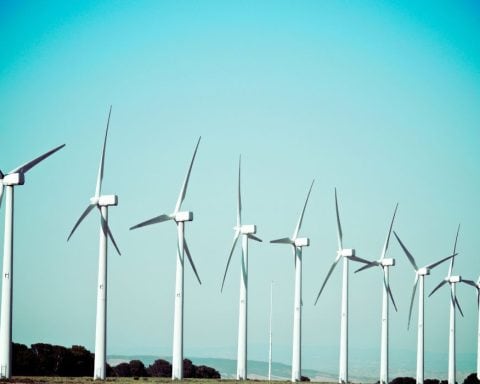In the face of the mounting climate emergency and urgent calls from the Intergovernmental Panel on Climate Change to rapidly curtail the use of fossil fuels, governments and businesses are scrambling to spell out plans to dramatically reduce greenhouse gas emissions. What’s also clear is that individuals and households must do much more to alter their own carbon footprints, especially in high-consumption countries like Canada and the United States.
There’s no doubt that the universe of answers to the question “How do I reduce my carbon footprint?” expands constantly, taking in an impressively wide range of foods, consumer goods, clothes, lifestyle choices, mobility options and even investment products.
For those lucky enough to own a home, however, the challenge of how to decarbonize their dwelling is marred with complexity. The answer depends heavily on obscure public policy, distant infrastructure, evolving insights about building science, and the viability of new technologies. And at the pointy end of that particular stick sits the furnace in the basement, an unsexy appliance that most people don’t think about, unless it’s not working.
There are basic energy-efficiency fixes that do resemble easy consumer choices: insulate the attic, plug the gaps around walls and doors and retire the beer fridge. However, the problem of reducing gas consumption for heating, water and cooking is way more difficult, subject to strong economic headwinds (cheap gas), as well as a general lack of consumer knowledge about alternatives, at least in the Canadian context.
While building-related energy contributes about 18% of Canada’s total greenhouse gas emissions, the natural gas burned for space and water heating can account for as much as half of all carbon generated in big cities. What’s more, space heating in buildings also drives upstream emissions related to natural gas extraction from wells and shale deposits across the continent, as well as production and refining releases (including potent methane leaks, flares and so on).
Using less or no natural gas for heating, in short, could be the most impactful move a homeowner could make, but governments have been exceedingly slow to advance policies that would transition homes off gas-burning furnaces, despite declarations of climate emergencies by city councils. The upshot is that while we may talk a lot about moving to net-zero homes and buildings, the path there is lined with potholes and easily missed opportunities.
There are, however, a growing number of early adopters willing to share their experiences – and their energy bills from before and after – on navigating the transition from gas to electric heat. In large measure, the technology – air-source heat pumps – not only exists, but is in wide use in many other parts of the world, including gas-dependent regions like Europe. Herewith, a primer on getting from here to there.
How heat pumps work
Air- and ground-source heat pumps are an established, commercialized technology, with systems available from well-known manufacturers like Rheem, Carrier and others. According to the International Energy Agency, there are about 180 million in operation worldwide, and the global market is growing by 10% per year. There are 700,000 in Canada, and about 1.8 million were purchased in the European Union in 2020 alone.
These devices gather and concentrate ambient external heat and pump it indoors in the winter, and reverse the process to concentrate and expel indoor heat in the summer, thus providing both heating and cooling. (In winter, the process involves a fan that draws in air, which is exposed to tubes containing a refrigerant that absorbs any residual heat in the outside air and compresses it into a hot vapour. The pump then takes that warmth and blows it into the house through existing air ducts. Mitsubishi, a leading supplier, offers a useful explainer here.)
In the past decade, they have become much more efficient, with some models capable of operating at very low temperatures. As this guidebook from Natural Resources Canada explains, “It may be surprising to know that even when outdoor temperatures are cold, a good deal of energy is still available that can be extracted and delivered to the building. For example, the heat content of air at -18°C equates to 85% of the heat contained at 21°C. This allows the heat pump to provide a good deal of heating, even during colder weather.”
When to consider changing lanes
The worst time to think about figuring out a new approach to home heating is in the depths of winter when the furnace conks out. At that point, the emergency service crews, either from one of the gas distributors (if you rent) or the HVAC contractors (if you own) will almost certainly recommend a “like with like” replacement – a new, and more energy-efficient, gas furnace. Furnaces last for 20 to 25 years, which means that if you have to make this switch today, you’ll be burning fossil fuels in your home until mid-century, which is too late.
A much better solution is to take a measure of the state of your furnace and estimate when it needs to be replaced. (All of this reasoning also applies to replacing gas water heaters with electric ones.) The best time to do the research and pre-installation preparation for the transition is just before you plan to retire the old gas furnace. Don’t wait for the emergency.
If you rent the furnace (or the water heater) from a gas services company like Enercare, the calculation also applies: the buyout will be a lot lower toward the end of the lease term than the beginning (e.g., here’s the buy-out schedule for Enercare.)
Your panel and your hydro sources
If you live in a region where electricity is mostly generated by fossil fuel, stop. There’s no point in transitioning until the grid becomes greener. Most Canadians, however, have access to relatively low-carbon electricity, which means the shift will produce meaningful reductions.
Switching from gas to electric means you will consume much less or no gas but more hydro, and that shift in energy flow into the house may entail upgrading the electrical panel, particularly for those living in older homes. Upgrading can run up to about $5,000, for a 200-amp fuse box. But bear in mind that an electric heat pump replaces both the furnace and the air conditioner, so the net change in hydro consumption may actually be less than you expect.
Grants, loans and other incentives
Generally, gas companies are not required to encourage customers to switch from gas to electric heat, although some utilities, like Con Edison in New York, now provide such incentives.
In some hydro-rich regions, like B.C., homeowners can secure generous grants or loans to retrofit their homes with electric heat, via air-source heat pumps, and the new federal green-homes program also provides financing for such projects. Yet in many other places, gas and electricity regulators function separately. Consequently, homeowners may qualify for rebates to upgrade old gas furnaces to high-efficiency models that will continue to flow natural gas into homes for decades.
The number of grant and loan programs for such retrofits has expanded in the past few years, and now includes Ottawa’s Greener Homes program, as well as subsidies offered by some provinces and municipalities, such as B.C.’s newly doubled CleanBC program or the City of Toronto’s home energy loans. Quebec, in turn, offers modest rebates for heat pumps based on performance levels. The federal Liberals, in their 2030 Emissions Reduction Plan, included $485 million for retrofits for lower-income homeowners.
Most depend on an energy audit and may be particular about the type of heat pump equipment that is eligible for rebates.
All-in or hybrid?
As with battery-operated vehicles, there are two possible approaches: all electric or hybrid systems that combine a heat pump with a gas furnace.
In a cold climate, the choice to install a high-efficiency cold-climate heat pump that will perform on the most frigid days does require more significant capital investment. These systems run from $19,000 to $25,000, depending on the size of the home.
Two years ago, for example, Sue Dexter, a retired journalist who lives in a Victorian home in downtown Toronto, decided to replace her old gas furnace with a cold-climate heat pump. All in, the project cost her about $25,000, which included the pump (a Mitsubishi Zuba), upgrading her electrical panels and installation. Dexter reduced her home’s gas consumption by about 90% in the first year (she still has a gas water heater).
Her net energy cost per month – hydro charges less gas charges – is about $26 less than it was previously, and that figure will fall further as carbon pricing increases. The switch reduced her home’s net carbon emissions for 2021 by 1.8 tonnes, a 95% reduction. For more details on her experiences, check out this case study prepared by the Sustainable Technologies Evaluation Program (STEP), which is run by the Toronto and Region Conservation Authority (TRCA).
While building-related energy contributes about 18% of Canada’s total greenhouse gas emissions, the natural gas burned for space and water heating can account for as much as half of all carbon generated in big cities.
Dexter, however, wasn’t motivated by cost: she’s a died-in-the-wool environmentalist and was prepared to make the capital investment. “To talk of return on investment seems odd to me,” she says. “That presumes the choice of any household essentials should yield a financial benefit. Would I ask the same of a stove? Or a TV system?”
Yet homeowners who are more cost-conscious have options, namely a hybrid system. These combine a lower-cost heat pump with a gas furnace and also replace the AC. Hybrids operate in most temperatures except on colder days (below about -5°C), when the system switches from the heat pump to gas. STEP’s case studies show that gas consumption with a hybrid system can drop by over 40%.
Erik Janssen, a TRCA energy analyst who has prepared several other heat pump case studies, says his research shows that a hybrid system costs about $1,000 to $3,000 more than a conventional furnace, which means that when an owner is poised to replace their system, the capital costs are only moderately higher, and may be recouped in part by grants.
“If the hybrid option can prevent a homeowner from doing a like-for-like replacement of their furnace-AC,” he says, “then it is certainly a large step in the right direction. They would no longer be fully and directly dependent on fossil fuels for heating.” A hybrid system, he adds, is also an economical solution if only the AC unit is in need of replacement (i.e., the heat pump serves as an air conditioner in the summer months).
Bottom line
The best way to radically reduce home carbon consumption, Janssen says, is a full Passive House–grade building envelope retrofit, which involves fully insulating the exterior walls, installing triple-glazed windows, et cetera. But these projects can cost tens of thousands of dollars. The next greenest measure is installing a geothermal system (i.e., a network of buried vertical pipes that collect heat from hundreds of feet underground), but these tend to be expensive in urban settings.
Air-source heat pumps, he continues, “can still drastically reduce emissions, but they also cost less than these other options in the context of existing homes. I think what we’re likely to see is a variety of technologies and approaches being deployed in homes to address climate change. This is a good thing. Each approach has its relative strengths and will find its niche.”
Correction, April 18, 2022:
An earlier version of this article misstated that geothermal systems in urban settings consist of a network of buried pipes that collect heat from about three metres underground. They in fact collect from hundreds of feet underground.





